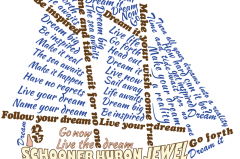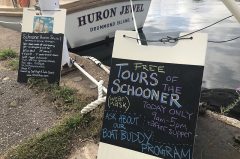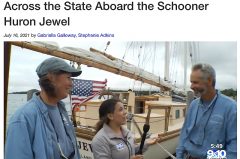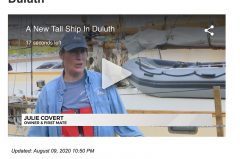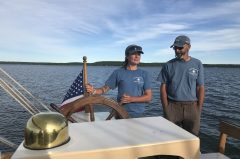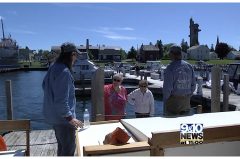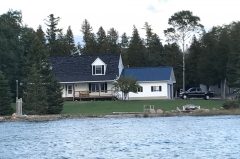June 26, 2016
Things have been moving along on the schooner project. All the longitudinals (sheer clamps, chine logs, and engine stringers) are in; fairing the framework so the planking will lay properly has begun and the centerboard trunk is almost complete.
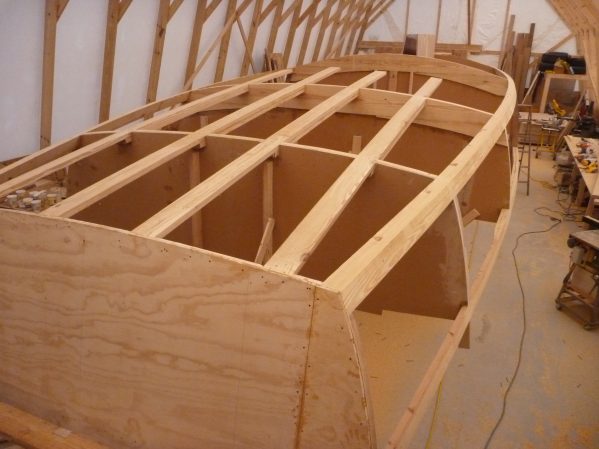
We laid the second and third layers of plywood on the transom as well, using about a quart and a half of epoxy resin on each layer mixed to a gravy sort of consistency. The four standard thicknesses of epoxy are syrup, ketchup, mayonnaise and peanut butter. Gravy is in between, when syrup would be right but it has to go on a vertical surface and you don’t want it to run off too much, and ketchup is too thick and might hold the pieces apart.
The first plank to go on in this type of construction is a starter plank with tongues on both edges to mate with the Douglas fir tongue and groove planking. It tapers both fore and aft and guides the planks around the centerboard trunk, as well as making all the planking lay in fair curves around the bottom of the boat. This has been made and some trial pieces of planking laid.
They are only screwed down for the moment – in the bow area as that is the hardest place to make them fit. Due to the curve of the hull, the planks come together at the centerline for the forward eleven feet of the hull. This requires tapering them down to a curve to points and seemed to take all morning to get them right. Now there is a wide enough surface to walk on the whole length of the hull.
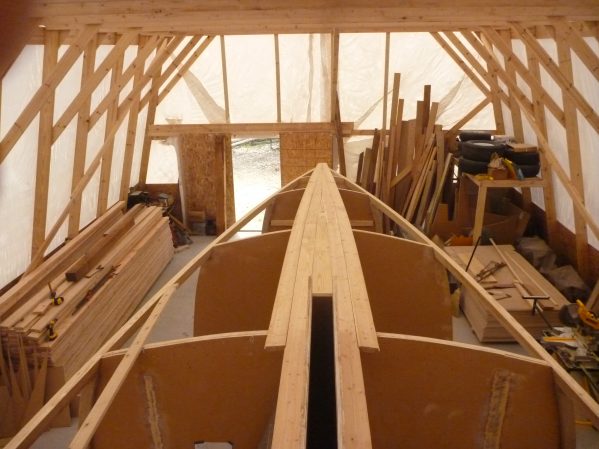
The anchor windlass should be here soon from the RC Plath Company in Oregon. It’s their most complex model, a rebuilt Model 4 in configuration #3 from 1960. I can handle both chain and rope on both sides.
Next is gluing and fastening the centerboard trunk in place, planking, and building the rudder and centerboard. We are looking for some boat building interns this summer and fall as there is plenty for them to do! More information about interning can be found at www.ditallship.com/intern/
– Captain Hugh
